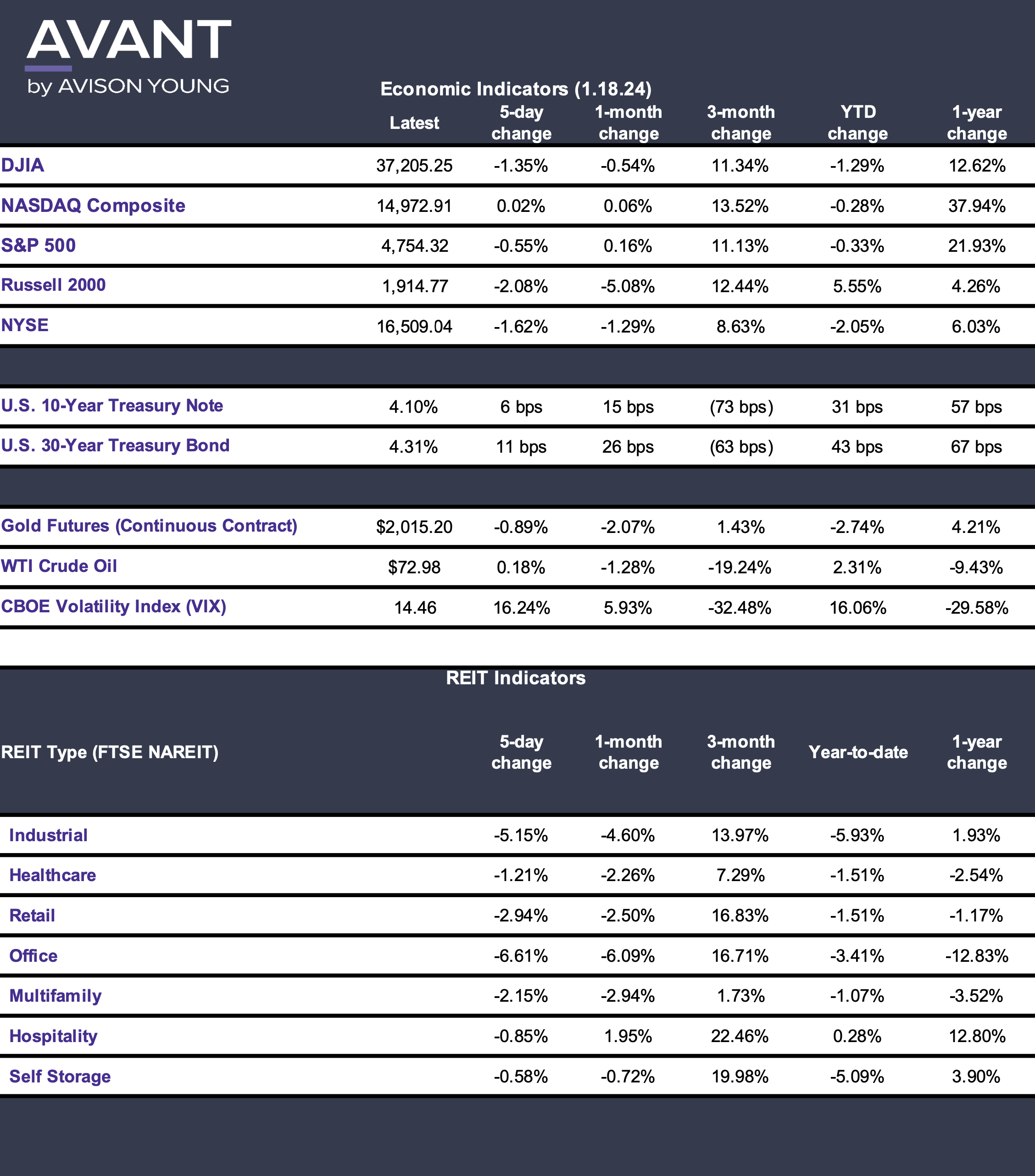Budget conscious shoppers drive modest holiday sales increase

A look at winners and losers this holiday season
Consumers continued to spend this holiday season, but at a more moderated pace than in recent years. They were also looking for bargains and, of course, the ability to quickly compare products, costs and delivery options across retail brands. All of this requires a complex behind-the-scenes network of warehouse and logistics operations that can store, sort, track and deliver for consumers. Here’s a look at the winners and losers this holiday season and how shifting retail trends are impacting the industrial sector.
Principal
Head of Industrial Capital Markets
[email protected]
+1 312.273.9486
The U.S. retail sector recorded another active holiday shopping season in 2023, with in-store and online sales rising 3.1% year-over-year (YOY) during November and December, according to the Mastercard SpendingPulse report. Online sales continued to expand, rising by 6.3% while in-store sales gained 2.2%. When sales are totaled later this month, several sources are expecting them to reach more than $950 billion.
After a few years of strong spending, the 2023 holiday season was defined by a more deliberate approach to spending and a focus on budget and value, according to Mastercard. Consumers were reigning in some spending after more exuberant spending coming out of the pandemic. Holiday spending fell short of the 3.7% annual increase predicted early in the season by Mastercard and was less than last year’s 7.6% increase.
Recent research by the National Retail Federation (NRF) showed a successful November and December for retailers, who focused on offering more options for budget conscious consumers. The NRF reported that consumers continued to spend at a steady level, despite expectations of a widespread slowdown in activity. Their resilience was attributed to healthy job creation and a stabilizing economy, despite some lingering economic concerns. Inflation has dropped from its peak of 9.1% in June 2022 to 6.4% in January 2023 and 3.1% in November 2023, the latest government data available.
The five-day holiday weekend from Thanksgiving to Cyber Monday set another record, as 200.4 million consumers shopped compared with 196.7 million in 2022, according to the NRF. The figures surpassed expectations and reflected the continued resilience of consumers, along with the strength of the economy.
Black Friday recorded 76 million shoppers in bricks and mortar retail stores, an increase from 73 million in 2022, according to the NRF. That was the most popular day for online shopping, attracting 90 million shoppers, up from 87 million in 2022. Nearly 60 million consumers shopped in stores on the Saturday after Thanksgiving, a decline from 63.4 million in 2022.
The outlook for retail sales in 2024 is moderate growth that aligns with historical averages around 3% to 4%.
Retail winners and losers
The big winners this holiday season were online and other non-store sales, which jumped 31.17% YOY, according to the NRF. Shopping categories that recorded YOY increases were: health and personal care items (5.58%); grocery and beverage items (2.39%), and sporting goods, hobby and music purchases (2.25%).
Restaurant spending was also strong, ranging from 5% to nearly 8%, depending on the source. Consumers are continuing to focus on experiential retail, a transformation that has reshaped the retail industry in recent years. While they have concerns about the economy, shoppers have shown their willingness to deploy their purchasing power when they are ready – just check the results of Taylor Swift’s recent Eras Tour.
Many consumers shied away from making large purchases like electronics, appliances and furniture during the recent holiday season, however. Those categories saw tepid sales or declines, because they were coming down from pandemic-related peaks, and rising interest rates put many home sales out of reach.
Several areas tied to the stagnant home buying sector recorded declines, including building and garden supply store items (-10.17%); electronics and appliances (-6.3%); and furniture and home furnishings (-3.76%).

Tracking shopping trends
The 2023 shopping season follows a few challenging years for retailers and shoppers, as the pandemic ushered in supply chain disruption, severe inventory fluctuations and delivery delays for the 2020 and 2021 holiday seasons. Those two years were characterized by uncertainty and shortages of goods, ranging from computers to furniture to clothing, leading to higher prices.
The 2022 season saw improvement as inflation started to ease and supply chains normalized. After adjusting to price increases and splurging on travel and entertainment, shoppers became more price sensitive and focused their spending on major promotional periods such as Black Friday. Then came the shift toward spending on experiences, such as restaurants, which accounted for 15% of retail spending during the late fall of 2022, according to Mastercard. That category rebounded from have a share of 11% in 2020 and an average of 13% before the pandemic. The losers that year were home improvement, department stores and apparel.
E-commerce continues to grow and become an integral part of consumers’ buying habits. According to Saleforce, an e-commerce software provider, global online sales increased 3% on an annual basis to reach $1.17 trillion during the November to December 2023 shopping period. Sales increased by 6% year-over-year during Cyber week, which includes Thanksgiving, Black Friday and Cyber Monday, and the same percentage during the weeks before Christmas.
This moderated but steady level of retail spending is good news for the industrial sector given shifting consumer expectations for diverse and efficient shopping, order tracking, pickup and delivery options. The retail sector’s ability to deliver for today’s consumer is intrinsically linked to warehouse and logistics operations that are strategically located and designed to meet those expectations. With global e-commerce sales expected to reach nearly $7 trillion for all of 2024, according to Statista, the industrial sector will remain an important component of that growth.
Sources: CNBC, Mastercard, National Retail Federation, Salesforce, Statista

